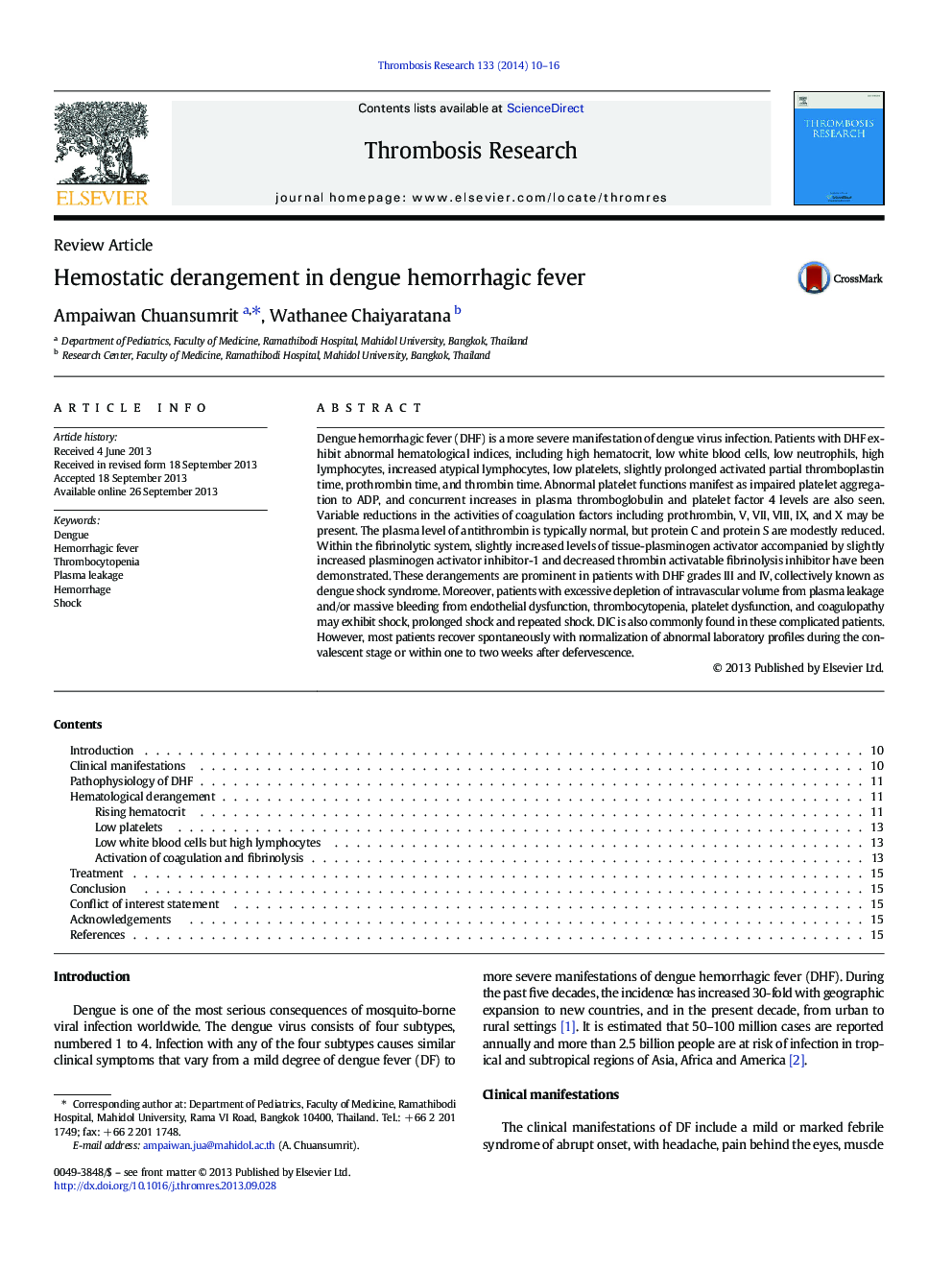| Article ID | Journal | Published Year | Pages | File Type |
|---|---|---|---|---|
| 6001646 | Thrombosis Research | 2014 | 7 Pages |
Dengue hemorrhagic fever (DHF) is a more severe manifestation of dengue virus infection. Patients with DHF exhibit abnormal hematological indices, including high hematocrit, low white blood cells, low neutrophils, high lymphocytes, increased atypical lymphocytes, low platelets, slightly prolonged activated partial thromboplastin time, prothrombin time, and thrombin time. Abnormal platelet functions manifest as impaired platelet aggregation to ADP, and concurrent increases in plasma thromboglobulin and platelet factor 4 levels are also seen. Variable reductions in the activities of coagulation factors including prothrombin, V, VII, VIII, IX, and X may be present. The plasma level of antithrombin is typically normal, but protein C and protein S are modestly reduced. Within the fibrinolytic system, slightly increased levels of tissue-plasminogen activator accompanied by slightly increased plasminogen activator inhibitor-1 and decreased thrombin activatable fibrinolysis inhibitor have been demonstrated. These derangements are prominent in patients with DHF grades III and IV, collectively known as dengue shock syndrome. Moreover, patients with excessive depletion of intravascular volume from plasma leakage and/or massive bleeding from endothelial dysfunction, thrombocytopenia, platelet dysfunction, and coagulopathy may exhibit shock, prolonged shock and repeated shock. DIC is also commonly found in these complicated patients. However, most patients recover spontaneously with normalization of abnormal laboratory profiles during the convalescent stage or within one to two weeks after defervescence.
